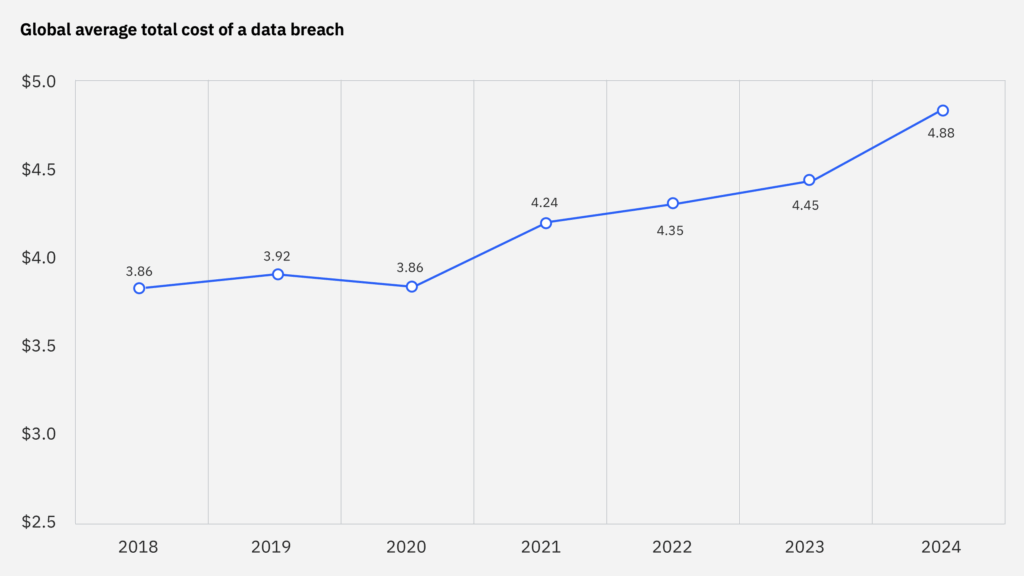In a world that is becoming more and more digital, data breaches are no longer a distant threat; they are a real problem. The stakes are especially high for businesses and government agencies based in the Caribbean. As regulations become stricter, cybersecurity resources become scarcer, and digital footprints grow, it’s important to know how data breaches affect your business’s finances and operations. The 2024 Cost of a Data Breach Report has useful information that can help organisations get ready, respond, and spend a tad more wisely on data security and governance.
The five most significant findings from IBM’s Cost of a Data Breach Report:
Average rise in breach costs

The average cost of a data breach around the world went up by 10%, to USD 4.88 million. This is the biggest increase since the pandemic. This rise is due to problems with businesses and the costs of dealing with a breach, such as more customer support needs and higher regulatory fines.
AI and Automation help to lower compliance costs
Companies that used security AI and automation a lot saved an average of $2.2 million in costs related to breaches. These tools sped up prevention, detection, investigation, and response, which helped contain the problem faster and cut down on costs.
Lack of cyber skills = greater breach costs
More than half of the companies that were hacked said they didn’t have enough security staff. This was connected to a 26.2% rise in breach costs, which averaged $1.76 million in extra costs. This gap in talent got worse last year and is still a major weakness today.
Higher costs come with longer breach lifecycles
It costs an average of $5.46 million to find and fix a breach that took more than 200 days. As an aside, companies that used AI and automation were able to respond faster, which cut down on both the time it took to complete a recovery/response task and the costs that came with it. The larger point: having mechanisms in place preemtively that result in a short tail breach are paying for themselves.
Costs and risks of shadow data
35% of breaches involved shadow data, which is data that is stored outside of secure environments and is not managed or looked after. This is consistent with observations in our own breach coaching work. The report suggests that these breaches took 26.2% longer to fix and cost 16% more. The clear implication: it pays to have effective (read:comprehensive) data management plans based on thorough inventories.
Conclusion
These results of IBM’s survey send a strong message to Caribbean businesses: invest in data governance, AI-powered security tools, and skilled cybersecurity staff right away. As digital transformation efforts increase in number and scope across the Caribbean, the ability to handle data safely and respond quickly to threats will define your organisation’s resilience. Now is the time to improve your data governance framework and get ready for the changing threat landscape, whether you’re a government agency protecting citizen data or a private business protecting customer trust.
Link: IBM Report